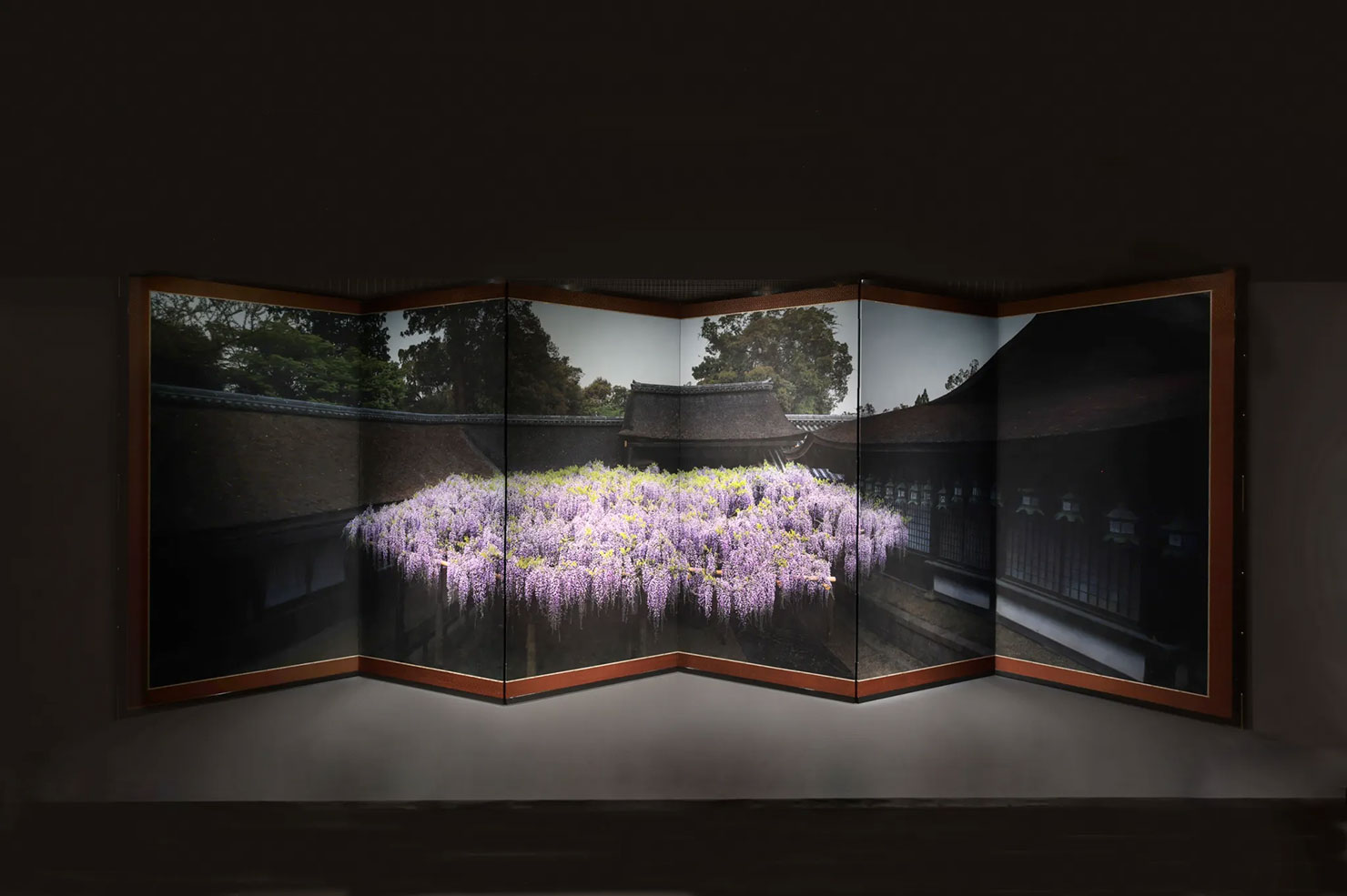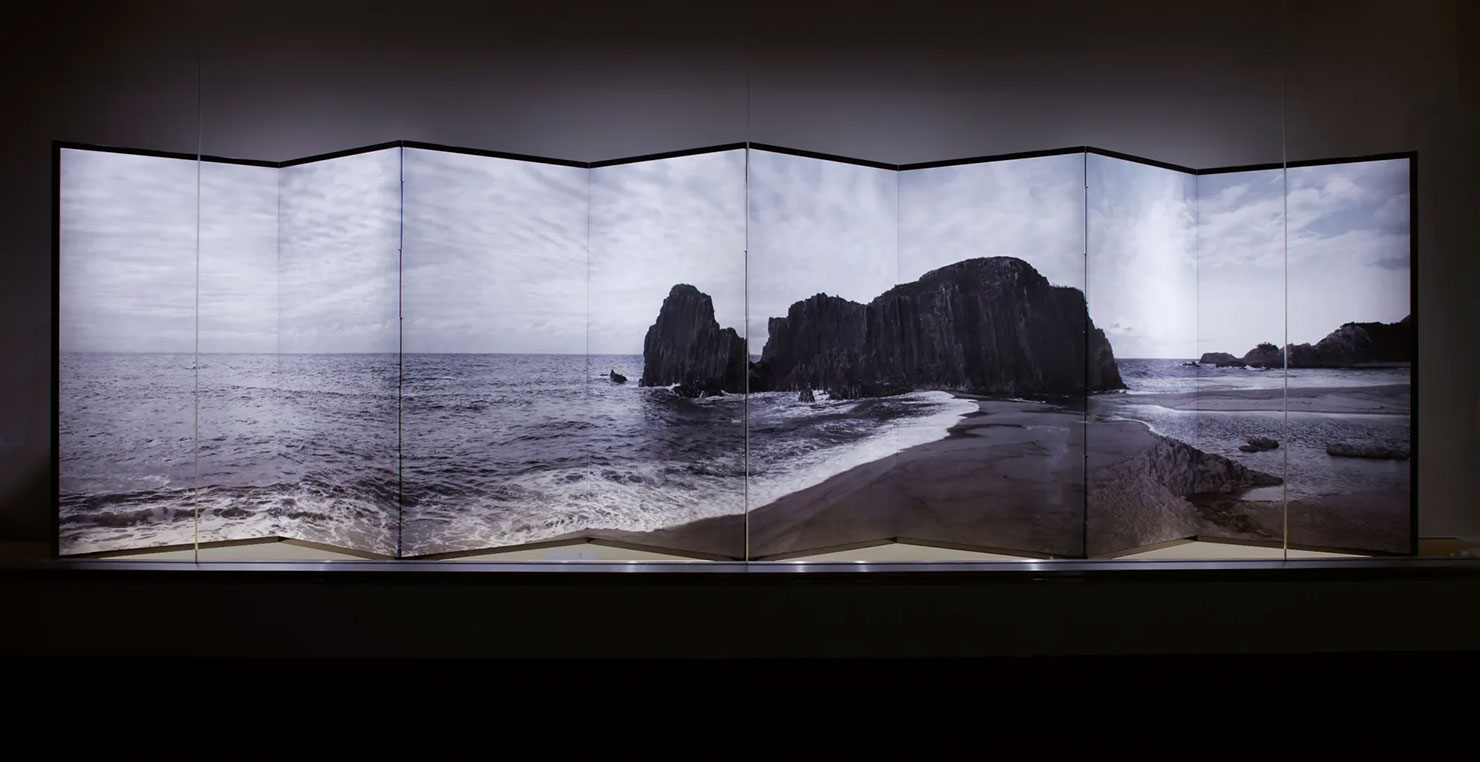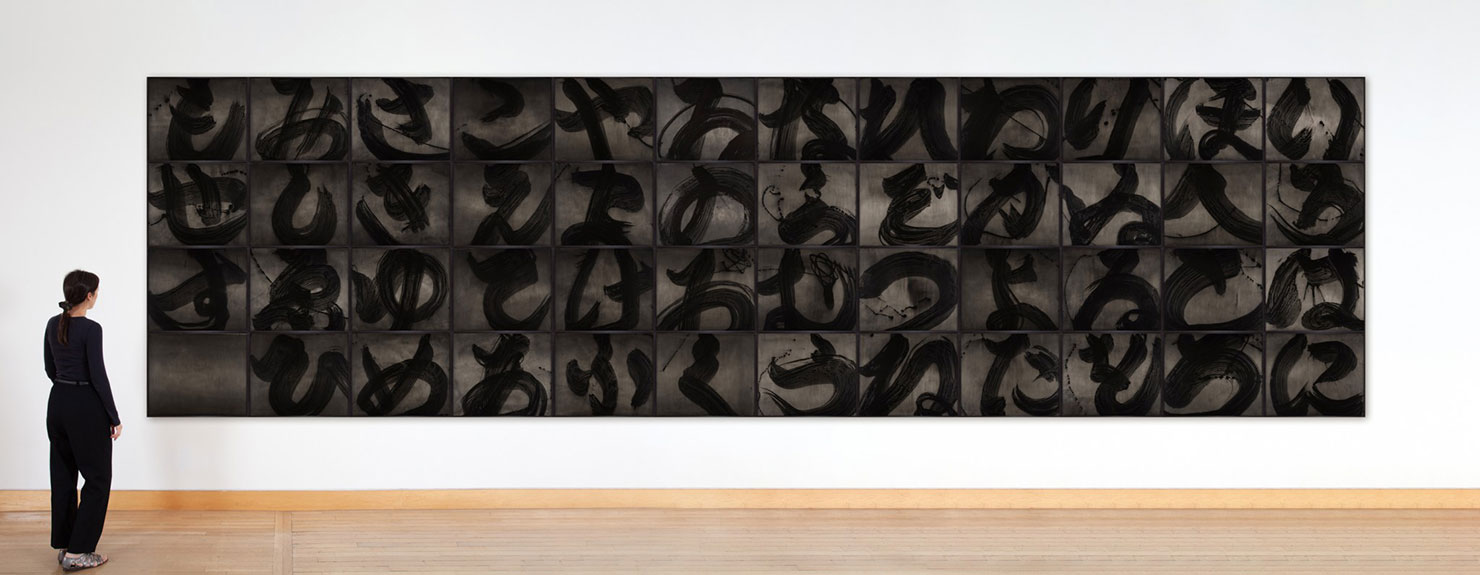PHOTO: Hiroshi Sugimoto
 Working in photography since the 1970s, Hiroshi Sugimoto’s multidisciplinary practice includes sculpture, performing arts production, and architecture. His work explores history and temporal existence by investigating themes of time, empiricism, and metaphysics. Grounded in technical mastery of the classical photographic tradition, he examines the ways photography can record traces of invisible but elemental forces.
Working in photography since the 1970s, Hiroshi Sugimoto’s multidisciplinary practice includes sculpture, performing arts production, and architecture. His work explores history and temporal existence by investigating themes of time, empiricism, and metaphysics. Grounded in technical mastery of the classical photographic tradition, he examines the ways photography can record traces of invisible but elemental forces.
By Dimitris Lempesis
Photo: Fraenkel Gallery Archive
Hiroshi Sugimoto presents two new bodies of work, in both series, the artist incorporates photographic techniques and materials into classical Japanese art forms, producing works that draw from the country’s spiritual history. Two immense folding screens, known as byobu, feature photographs of Japanese landmarks of sacred significance, delicately printed onto rice paper. The graphically striking series “Brush Impression” presents cameraless, one-of-a-kind calligraphic photographs made by painting Japanese characters onto light sensitive paper using photographic chemicals. Two large folding screens anchor the exhibition. Representing revered locations, these works feature photographic pigment prints made on traditional Japanese Washi paper. An eight-paneled screen, nearly 24 feet long, depicts a view of Tateiwa Rock, a volcanic formation in Kyoto Prefecture that has featured in folkloric legend. An 18-foot, six-paneled screen depicts wisteria vines in bloom at the Kasuga-Taisha Shinto shrine in the ancient city of Nara, where the exhibition Hiroshi Sugimoto – The Descent of the Kasuga Spirit, curated by Sugimoto, took place earlier this year. This screen was included in the exhibition, which paired Shinto and Buddhist antiques, some from the artist’s personal collection, alongside contemporary artworks. In “Brush Impression”, Sugimoto creates kanji, the form of Japanese language based on Chinese pictograms, and hiragana, phonetic characters used in Japanese. Rather than using ink, Sugimoto paints with darkroom chemicals on silver gelatin paper to produce black and white or subtlety warm-toned works, which range in size up to nearly 40 by 30 inches. The study of calligraphy has long been an interest of Sugimoto’s— each unique piece records the movement of his large brush across the surface of the paper, producing gestural shapes as well as splashes, bubbles, and traces of bristles. The kanji characters he selects represent words for elemental forces such as fire and water, and the meaning of each word is heightened and reinforced by the expressive qualities of each piece. An orange glow suffuses “Brush Impression 0810 (Moon)”, suggesting the rich color of a blood moon, while erratic splatters and drips surround the character for madness. “Brush Impression (Iroha Song)”, a set of 48 smaller works written in hiragana, transcribes an eleventh-century Japanese poem. Famous in part for its pangramic inclusion of each symbol that makes up this form of the language, the poem has served as a sort of alphabet.
Photo: Hiroshi Sugimoto, Wisteria of Kasuga Grand Shrine,,2022, pigment print on Japanese rice paper, mounted to folding screen, 71-1/4 x 216 inches (overall), edition of 3, © Hiroshi Sugimoto, Courtesy the artist and Fraenkel Gallery
Info: Fraenkel Gallery, 49 Geary Street, 4th Floor, San Francisco, CA, USA, Duration: 26/10-22/12/2024, Days &Hours: Tue-Fri 10:30-17:30, Sat 11:00-17:00, https://fraenkelgallery.com/


![Left: Hiroshi Sugimoto, Iroha song (detail), 2023, 48 gelatin silver prints, 78-1/2 x 283-1/2 inches (overall installed), unique, © Hiroshi Sugimoto, Courtesy the artist and Fraenkel GalleryRight: Hiroshi Sugimoto, Brush Impression 0810 (Moon), 2023, gelatin silver print, 23-3/4 x 19-3/4 inches (framed) [60.3 x 50.2 cm], unique, © Hiroshi Sugimoto, Courtesy the artist and Fraenkel Gallery](http://www.dreamideamachine.com/web/wp-content/uploads/2023/10/SUG-39.jpg)
Right: Hiroshi Sugimoto, Brush Impression 0810 (Moon), 2023, gelatin silver print, 23-3/4 x 19-3/4 inches (framed) [60.3 x 50.2 cm], unique, © Hiroshi Sugimoto, Courtesy the artist and Fraenkel Gallery
